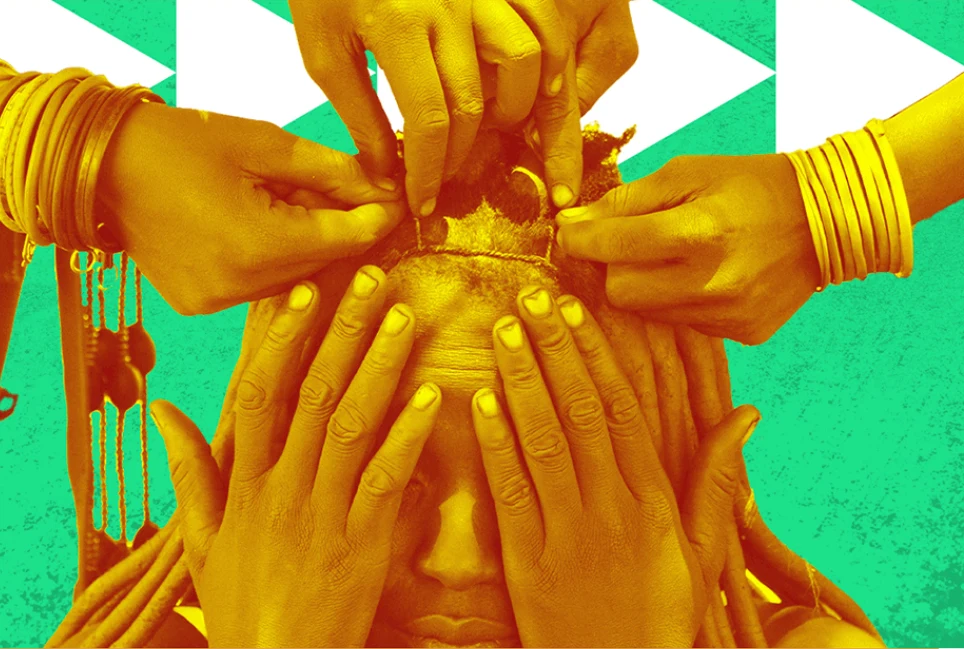Take the Black Hair Culture Quiz
HAIR
Feb 24, 2022

HAIR
Feb 24, 2022
Have you ever started doing your hair for work and couldn’t decide between wearing a blowout or twisting it into Bantu knots? Was there any thought around what one hairstyle represented in Black culture versus the other?
Let’s jump back to the 1500s for a second. In Africa, braids were used as a communication tool between different communities and societies, a sacred way to hold on to identity. Today, it’s no secret that Black hairstyles are still used as a communication tool; they set the precedent for fashion, film, and TV all over the world.
It got us thinking… how much do we know about the historically rich places that inspire our favorite hairstyles and accessories? So, we decided to put our opinions (and brains) together and created a six-question quiz about the ancestral and generational heritage rooted in Black hair. You with us?
Counting down in three, two, one.
a. Himba (him-buh)
b. Maasai (MAH-sigh)
c. Bantu knots (ban-tew)
d. Ngala (en-galla)
e. Tigray braids (tee-gray)
a. As a communication tool
b. As a roadmap of the Underground Railroad
c. To hide gold and seeds to sustain them
d. All of the above
a. Edamburu
b. Maasai (MAH-sigh)
c. Bantu knots (ban-tuu)
d. Himba (him-buh)
e. Tigray braids (tee-gray)
a. Locs
b. Twist Out
c. Cornrows
d. Box Braids
e. Afro
a. Ngala (en-galla)
b. Maasai (MAH-sigh)
c. Tigray braids (tee-gray)
d. Himba (him-buh)
e. Edamburu
a. Maasai (MAH-sigh)
b. Tigray braids (tee-gray)
c. Himba (him-buh)
d. Ngala (en-galla)
e. Edamburu
Aaaaannd you’re finished! Not too hard, eh? Let’s see how well you did. Check out the answer key below to see how your results stack up.
1. c. Bantu knots (ban-tew) | 2. d. All of the above | 3. a. Edamburu | 4. e. Afro | 5. a. Ngala (en-galla) | 6. b. Tigray braids (tee-gray)
ZERO ANSWERS CORRECT:Maybe you misnumbered? We’ll give you the benefit of the doubt...
ONE ANSWER CORRECT:One is better than none! Right...?
TWO ANSWERS CORRECT:You know a lil’ of this, a lil’ of that. Two right ain’t too bad.
THREE ANSWERS CORRECT:We see this result as the glass being half full.
FOUR ANSWERS CORRECT:OK, look at you! (Kinda) knowing things and stuff.
FIVE ANSWERS CORRECT:Congrats, you got all but one correct! Like almost being perfect, but you’re not.
SIX ANSWERS CORRECT:You are an educated queen! (And a pro at taking quizzes.) Now go brag to someone. We support it.






